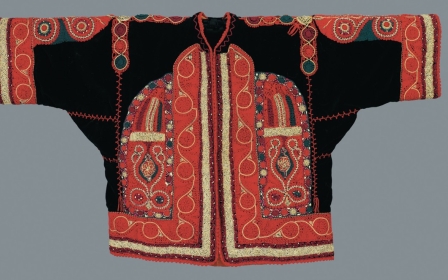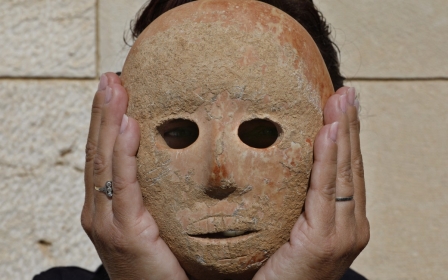
In pictures: Life in Palestine from 1890 to 1937
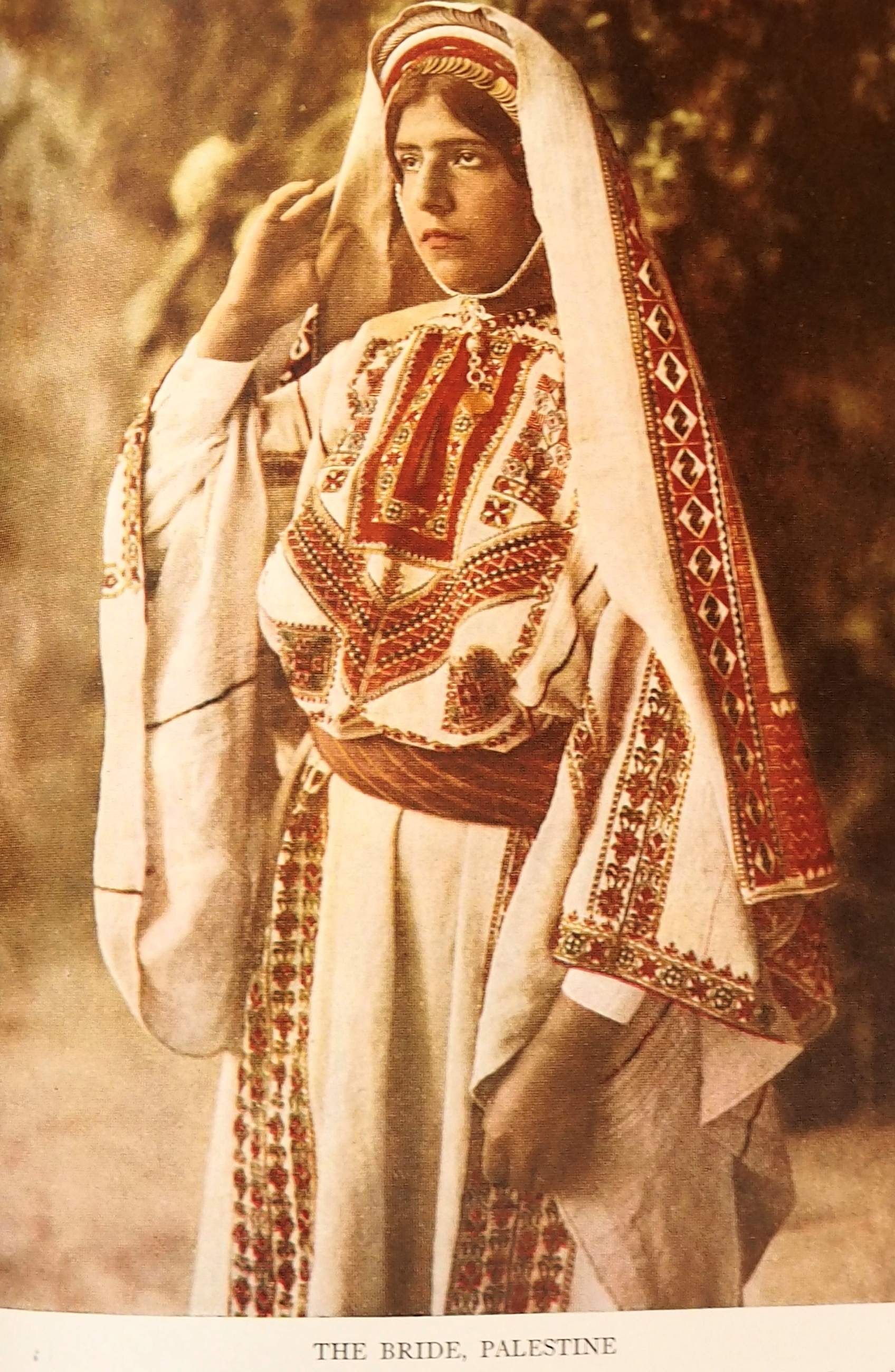
A distinct feature of Palestinian culture is the esteemed tatreez, or Palestinian embroidery. A centuries-old folk art, Palestinian embroidery is a key symbol of identity and culture. Palestinian women begin learning embroidery at a very young age and stitch various patterns, colours, and designs on their thobes (gowns), as well as their headdresses. Each region throughout Palestine specialises in a distinct form of embroidery, fabric, and headdress. In this way, each woman became a walking embodiment of her land. This photograph features the traditional embroidery designs of al-Bireh/Ramallah on a bride's clothing. (Image: National Geographic Magazine/John Whiting)
Palestinian wedding ceremonies have always been extravagant, particularly in rural Palestine where they were immersed with many rich traditions. The banner image at the top of this article shows a special wedding tradition, the zafat -al-arous, or the bringing of the bride ceremony. Many village customs involve the bride riding a horse with a sword in hand accompanied by all the members of her family. The family would walk alongside the bride and the women would sing the Zaghrouta or ululation, until they reached the groom’s home, where the festivities would commence. (Library of Congress)

In the early 20th century, the Bethlehem malak (which means "royal" in Arabic) became known as the “queen of dresses” and a sought after wedding outfit throughout Palestine. The malak’s popularity fuelled the growth of a textile industry in Bethlehem and many villages adapted it to fit their own style and customs. In this photo, a Bethlehemite woman wears traditional clothes adorned with a headdress customary of her town - a fez-like hat appended with coins from the woman’s dowry and a white shawl covering her head. (Library of Congress)
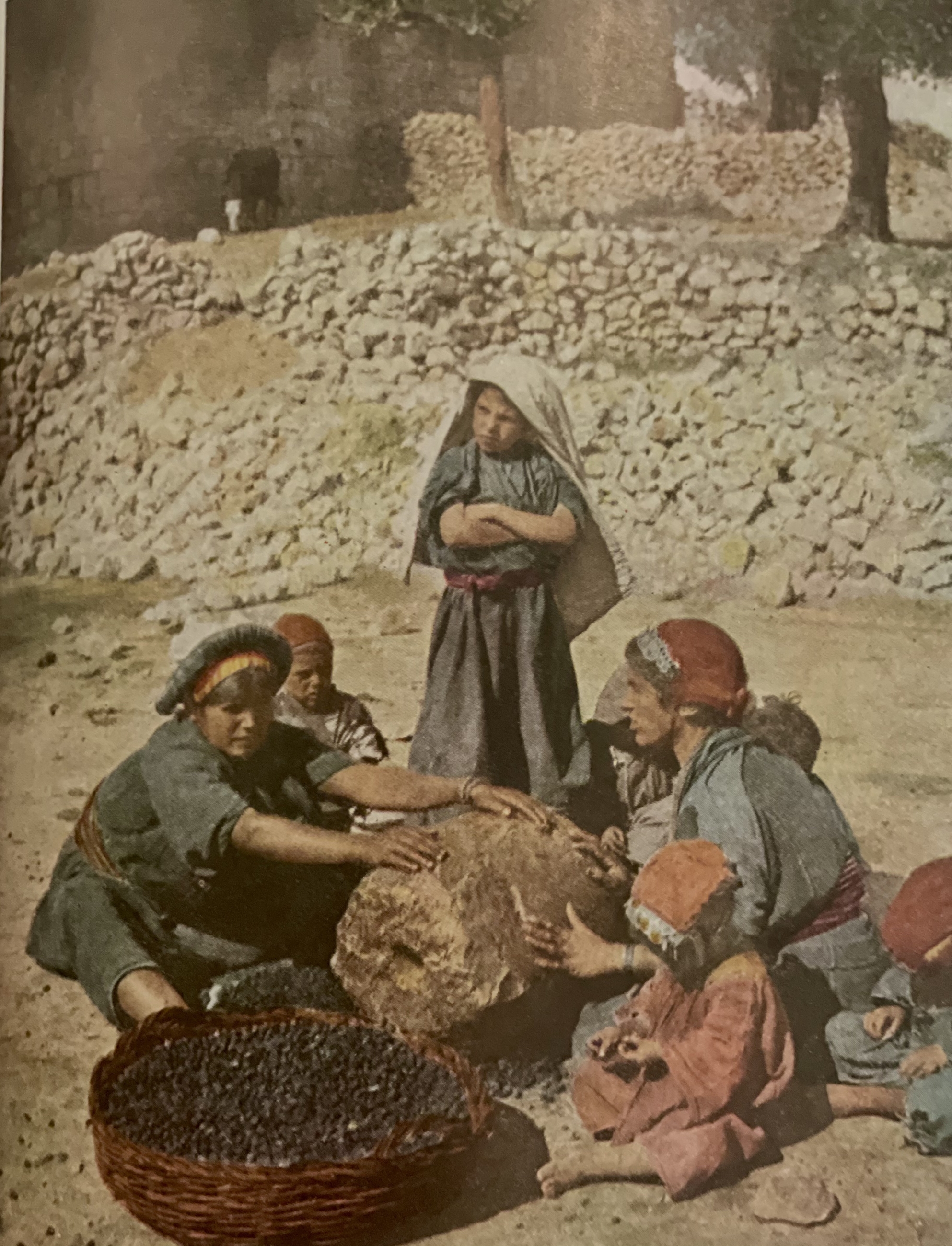
Palestine is considered to be the native home of the olive tree, and for centuries olives have been a centrepiece of Palestinian culture and traditions. In this photo, taken some time between 1890 and 1914, Palestinian women are seen using an ancient column as a roller to produce olive oil, by crushing the olives. Olive harvesting season typically commences in October or November. Once the olives are picked, they are put to use in a variety of ways by Palestinian farmers. The olive tree, like the jaffa orange, is a symbol of Palestinian national identity and emblematic of the connection Palestinians hold to their land. (National Geographic Magazine)

Rural Palestinian communities had many customary practices for their newborn babies. One of the most important, was massaging olive oil onto the skin of the baby for 40 days after its birth. The olive oil was intended to soften and strengthen the baby’s skin. Additionally, mothers would often line their baby’s waterline with Arabic kohl. This practice was intended to safeguard the eyes against bacteria, as well as to promote strong vision. Mothers would often tightly swaddle their newborn babies with rope-like cloths weaved around the blanket swaddle, mirroring the practices of many other cultures. Many of these ancestral practices are still in use today. (National Geographic Magazine)
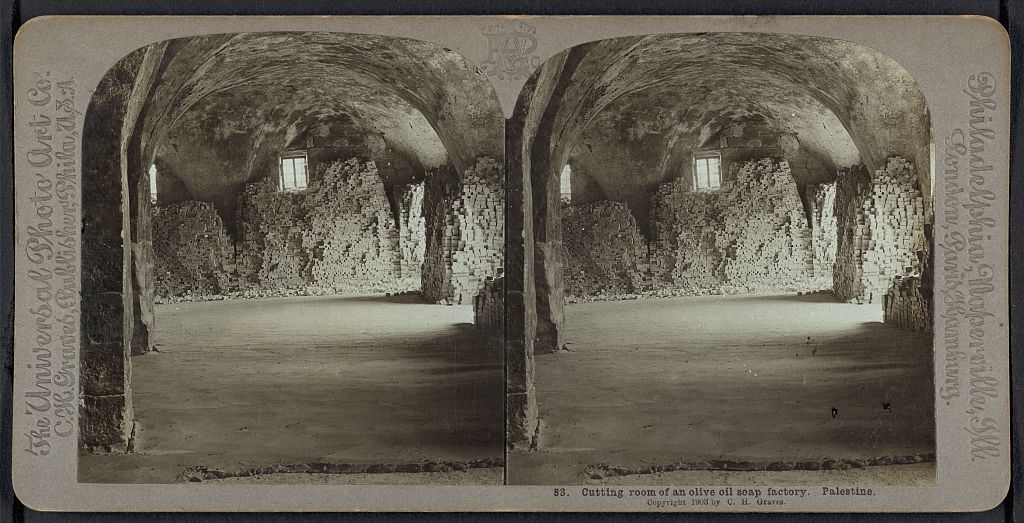
Olive oil is also used in soap production. Soap produced in the city of Nablus is made of Palestinian olive oil, water, and a sodium compound. Although Nablus mass produced the soap for international export, the olive oil soap was developed by the Palestinian fellah (rural) women for household use. However, it gained traction through trade and became a distinct product of the industrial city of Nablus from the 14th century onwards. In the early 1900s there were around 30 factories throughout Nablus producing the soap. One of the oldest surviving soap factories today is the Tuqan Soap Factory, which retails the famous muftahein (two-keys) Nabulsi soap. (Library of Congress)
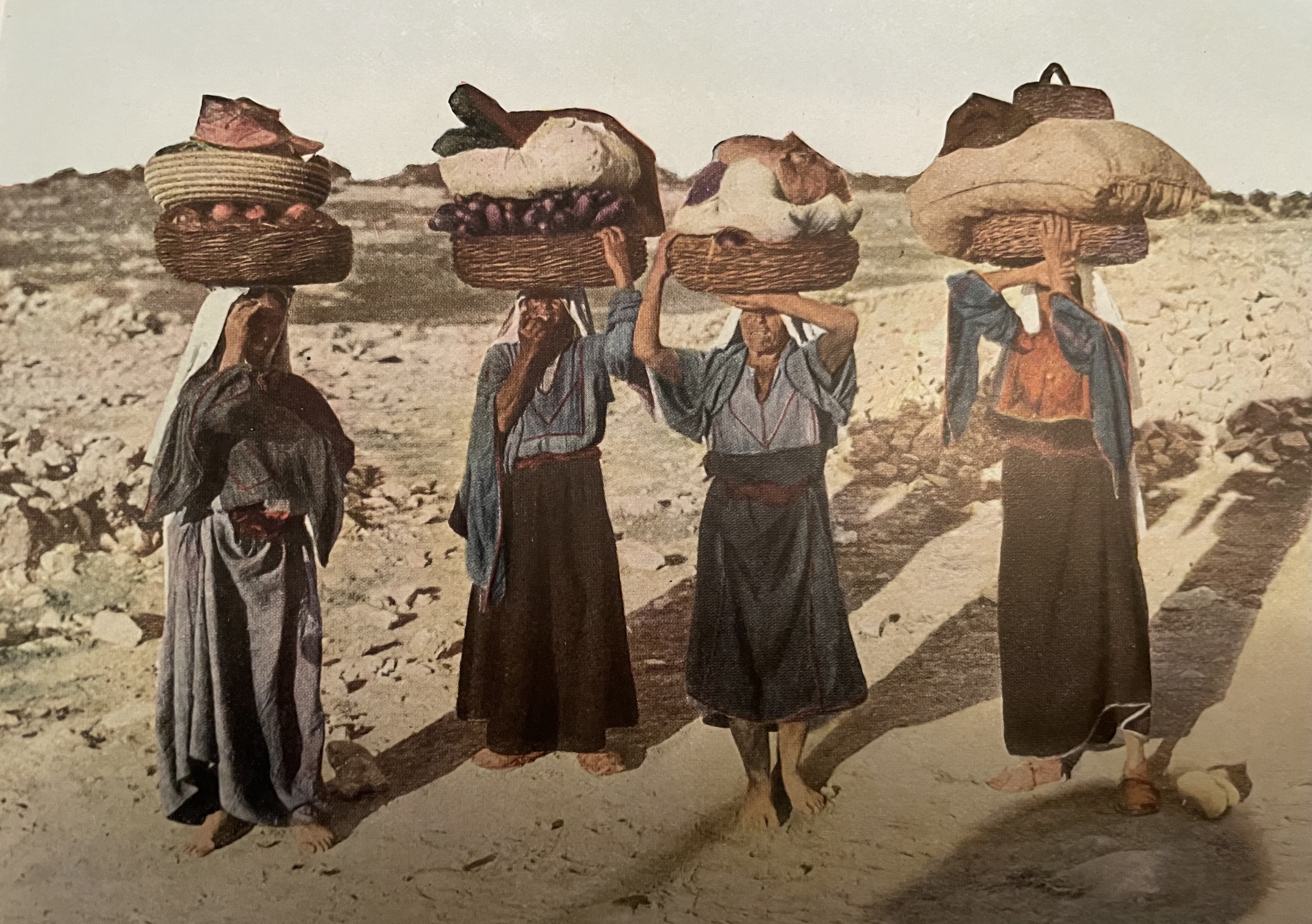
Fellah women were the backbone of Palestinian society, contributing widely to land cultivation and the Palestinian economy, and serving as pillars in the development of Palestinian culture and national identity. As seen through this photograph taken some time between 1889 and 1914, the rural women of Palestine would often travel long distances to sell their farming goods and handcrafts in marketplaces throughout Palestine. Palestinian women were heavily involved in protests against British colonisation and played active roles in politics following the Buraq Uprising of 1929 and during the Arab Revolt of 1933. (National Geographic Magazine)
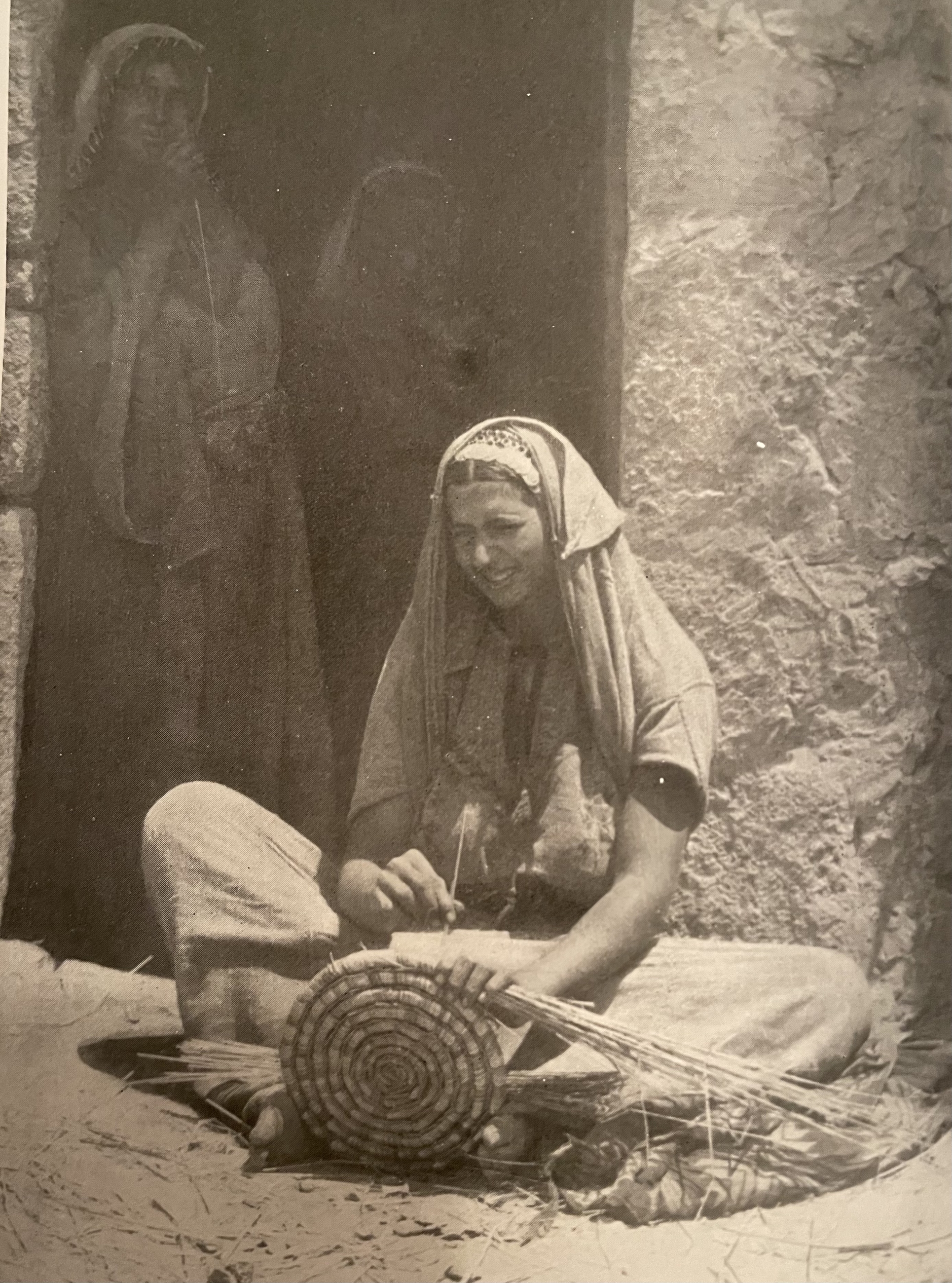
Basket weaving is a ritual heritage in Palestine, still practised today by many farming communities in the occupied West Bank. Women forage materials from their surroundings, such as wheat and twigs from olive, almond and terabinth trees to create baskets, trays, and containers. Once weaved, they are placed under the hot sun to dry. The photo above depicts a Palestinian girl hand-weaving baskets between 1910 and 1914. (National Geographic Magazine)
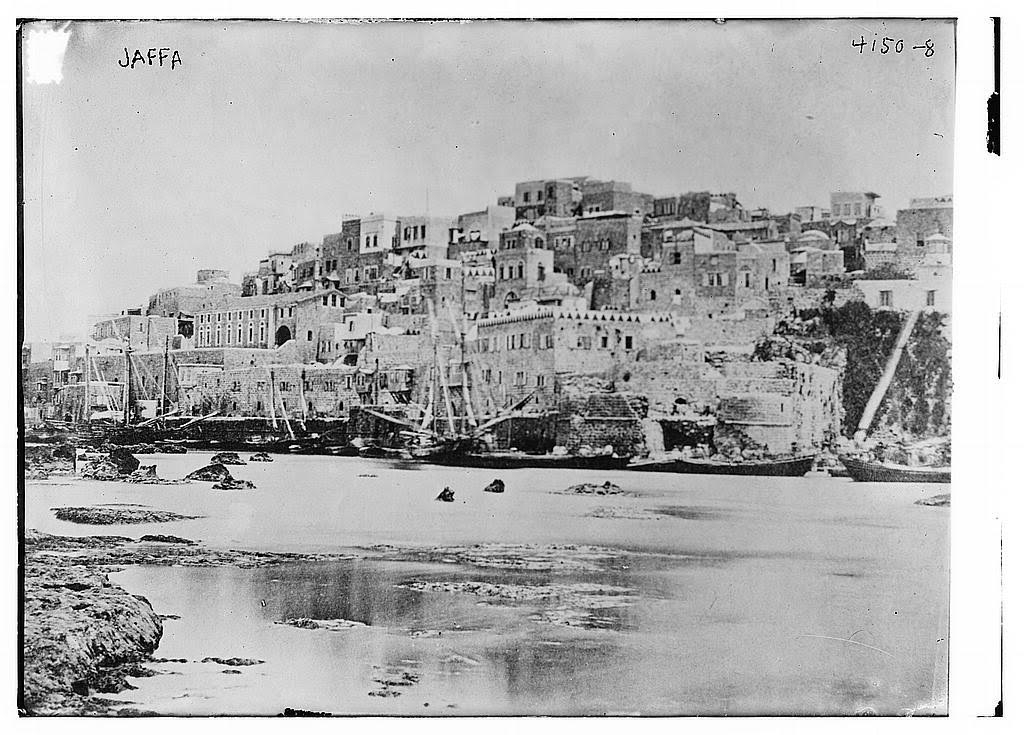
Jaffa, or Yafa as it is called by the Palestinians, is an ancient port city that has long been the gateway of the Mediterranean. Before the Nakba, Jaffa was the largest city in Palestine and was the centre of Palestinian culture and commercial activity. Jaffa is referred to by Palestinians as the "Bride of the Sea” given its distinct beauty as a coastal city on the Mediterranean Sea. (Library of Congress)
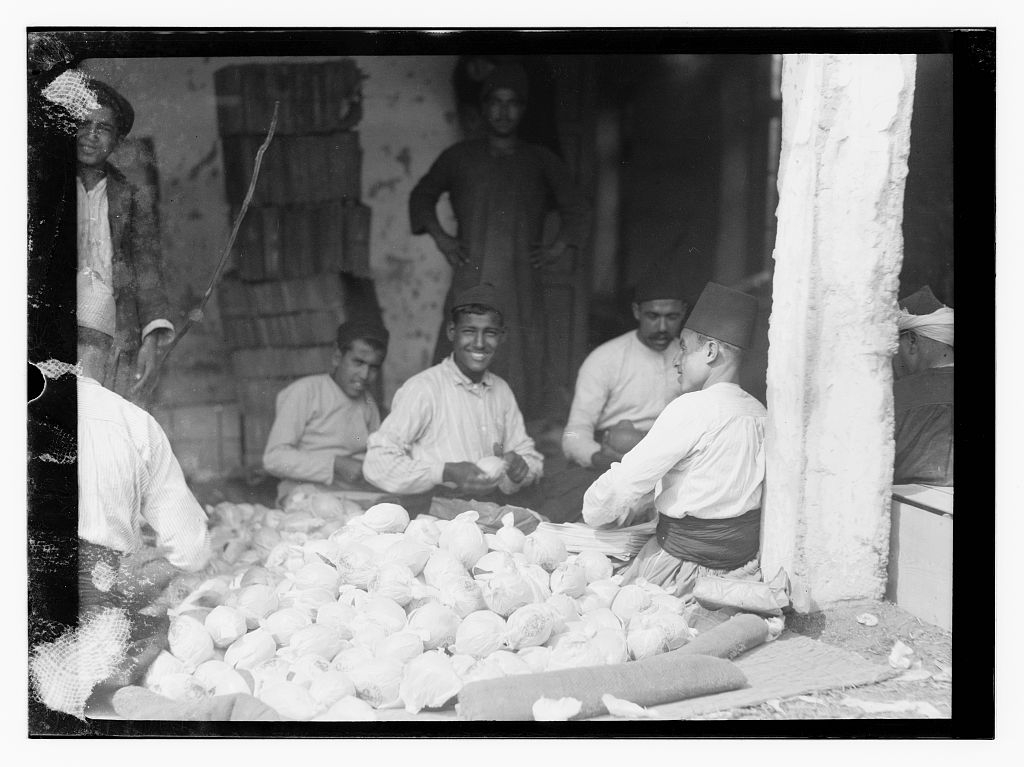
Cultivated by Palestinian farmers in Jaffa during the 20th century, the Jaffa orange named after the port city, and also known as the Shamouti orange, is a defining symbol of Palestinian national identity. Its distinct deep orange colour and sweet taste made it suitable for export and highly prized throughout the world. Jaffa oranges once served as a key export commodity for the Palestinian economy. (Library of Congress)
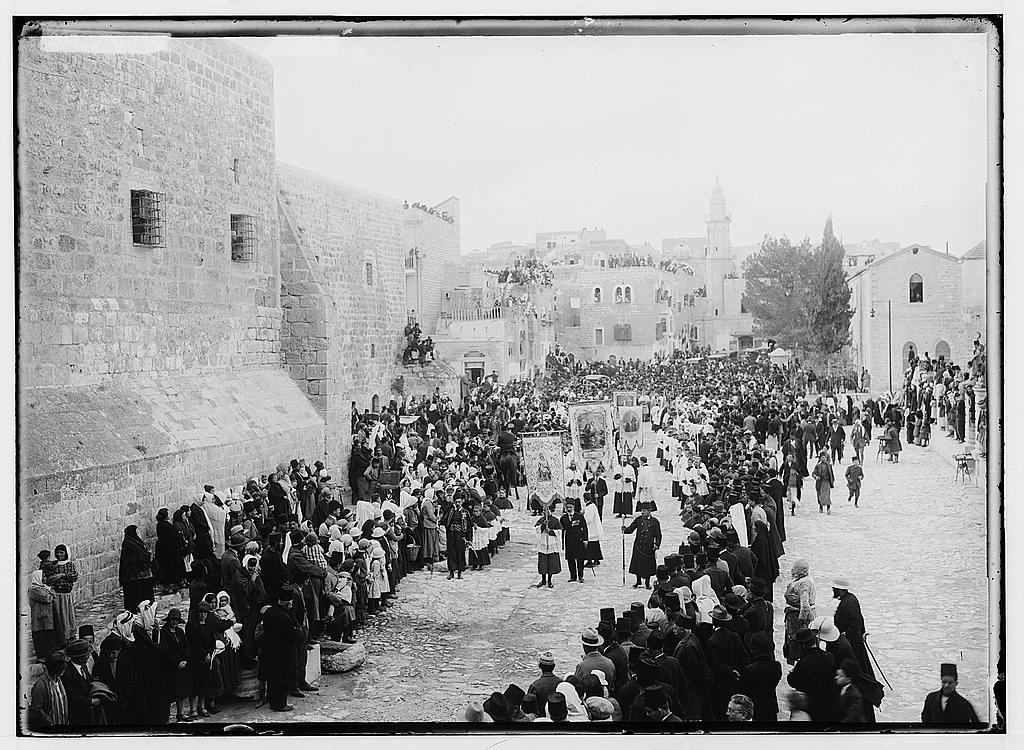
Religious festivals have been freely celebrated in Palestine for centuries. Here a Christmas procession in Bethlehem is taking place near the Church of Nativity in the year 1920. The Church of Nativity is a World Heritage Site and the first to be listed under "Palestine" by Unesco. (Library of Congress)

The Nabi Musa festival is another religious celebration. It was one of the largest Islamic celebrations in the region, inaugurated after Saladin’s capture of Jerusalem. It was considered to be one of the most important religious events in Palestine. Attended annually by Muslims throughout the world, pilgrims would travel from Jerusalem to what was believed to be the Tomb of Moses a few kilometres south of Jericho. The ceremony would last for one week, during which a series of celebrations through song, dance, and games would commence. (Library of Congress)
This article is available in French on Middle East Eye French edition.
Middle East Eye propose une couverture et une analyse indépendantes et incomparables du Moyen-Orient, de l’Afrique du Nord et d’autres régions du monde. Pour en savoir plus sur la reprise de ce contenu et les frais qui s’appliquent, veuillez remplir ce formulaire [en anglais]. Pour en savoir plus sur MEE, cliquez ici [en anglais].


